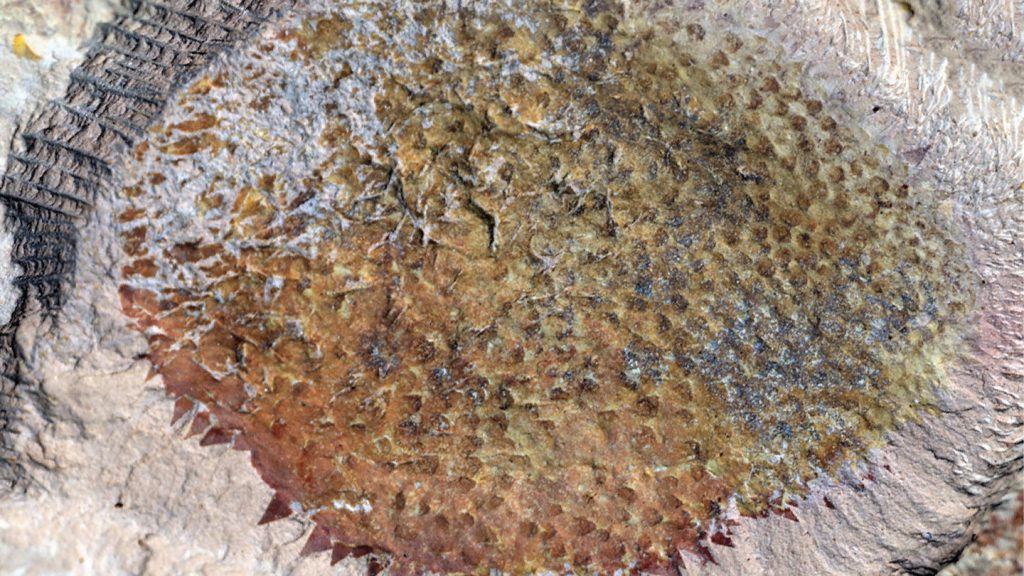A recent fossil discovery of an ancient invertebrate named Shishania aculeata has provided scientists with valuable insights into what mollusks looked like around 500 million years ago. This unique creature was a sluglike organism covered in prickly armor, similar to spiky fruit, and lacked shells, unlike modern mollusks. The presence of chitin spikes in this ancient mollusk reinforces the idea that early mollusks were covered in chitin spikes, a fibrous material found in crab and other mollusk shells.
The fossils of Shishania aculeata were found in China and date back to around 510 million years ago, during a period of rapid evolution for mollusk ancestors in the early Cambrian period. Although the fossils do not showcase the beauty of soft tissues, they provided researchers with valuable information that helped reconstruct the animal. Each specimen ranged from 1 to 6 centimeters in size, and through the examination of these fossils, researchers were able to piece together the ancient mollusk’s appearance and behavior.
The flat base and singular foot of Shishania aculeata indicate characteristics commonly found in modern mollusks, allowing the animal to move across or dig into sediments on the ocean floor. The presence of hollow chitin cones with narrow canals within them is a unique feature of this ancient creature. These canals are similar to those found in the exoskeletons of extinct and living worms and brachiopods, suggesting a common origin for these structures and providing further insight into the evolutionary history of mollusks.
The discovery of Shishania aculeata helps paint a more detailed picture of early mollusks and their adaptations in different environments. By studying these ancient fossils, scientists can gain a better understanding of the diversity and evolution of mollusks over time. The unique characteristics of Shishania aculeata provide valuable clues about the appearance and behavior of early mollusks and shed light on the evolutionary processes that have shaped these organisms.
Overall, the study of ancient fossils like Shishania aculeata provides scientists with a glimpse into the past and helps unravel the mysteries of early life on Earth. By piecing together the puzzle of ancient organisms, researchers can better understand the patterns of evolution and adaptation that have shaped the diversity of life we see today. With continued research and discoveries, we can continue to expand our knowledge of the natural world and our place within it.















